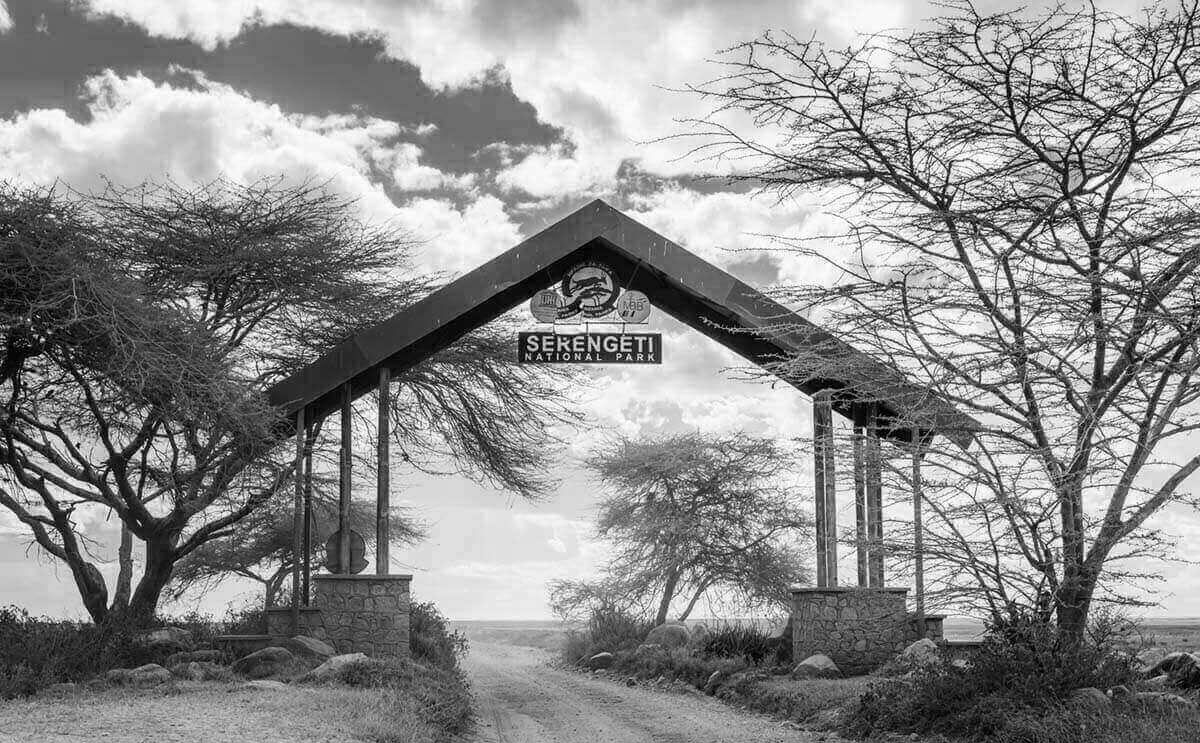Denham’s Bustard: A Vision of Prowess and Elegance in the Tanzanian Grasslands
Introduction to Denham’s Bustard
Denham’s Bustard, a magnificent avian species, graces the vast grasslands of Tanzania with its remarkable presence. This bird’s striking appearance and captivating behaviors have drawn the admiration of birdwatchers and nature enthusiasts worldwide. In this article, we will immerse ourselves in the world of Denham’s Bustard in Tanzania, exploring its habitat, distinctive physical characteristics, behaviors, and conservation status. We will also uncover the vital role this species plays within the Tanzanian grasslands ecosystem and discuss the dedicated initiatives in place to protect and preserve its population. So, grab your binoculars and join us on a journey to unveil the beauty and significance of Denham’s Bustard in Tanzania.
Habitat and Distribution of Denham’s Bustard in Tanzania

Denham’s Bustard is primarily found in the grasslands of Tanzania, specifically in the Serengeti, Tarangire, and Ruaha national parks. These vast open landscapes provide the perfect habitat for the bustard, allowing it to thrive and display its impressive prowess. The bird prefers areas with short grass and scattered shrubs, as it relies on its excellent camouflage to blend into its surroundings and avoid predators.
In terms of distribution, Denham’s Bustard can be found throughout Tanzania, but its population is more concentrated in the northern and central regions of the country. This bird species is known for its nomadic behavior, often moving in search of suitable foraging grounds or breeding sites. However, it tends to remain within the grasslands of Tanzania, making it a true icon of the country’s avian diversity.
Physical Characteristics and Behavior of Denham’s Bustard
Denham’s Bustard is a large bird, with males reaching an impressive height of around 3 feet. The male bustards are significantly larger than the females and have a distinct black and white plumage with intricate patterns that add to their elegance. They also possess a unique inflatable neck sac, which they use to attract mates during the breeding season.
The behavior of Denham’s Bustard is equally fascinating. These birds are known for their elaborate courtship displays, where the males perform impressive aerial displays and vocalizations to attract females. They also engage in competitive behaviors, such as inflating their neck sacs and engaging in mock fights, to establish dominance and secure mating opportunities.
When it comes to feeding, Denham’s Bustard primarily consumes insects, small reptiles, and seeds. They have a keen eye for spotting prey and use their long legs and sharp beaks to capture their meals. These birds are also known for their ability to detect predators from a distance, using their exceptional eyesight to ensure their safety.
Conservation Status and Threats to Denham’s Bustard Population
Despite its grandeur, Denham’s Bustard is facing numerous threats to its population. The primary threat is habitat loss due to human activities such as agriculture and infrastructure development. The conversion of grasslands into farmland and the construction of roads disrupt the bird’s natural habitat, making it difficult for them to find suitable breeding and foraging grounds.
Another significant threat is hunting and poaching. Denham’s Bustard is sometimes hunted for its meat or captured for the illegal pet trade. This, coupled with the loss of habitat, has led to a decline in the population of this remarkable bird species.
To address these threats, various organizations and conservationists are working tirelessly to protect Denham’s Bustard. They are raising awareness about the importance of the bird in the ecosystem and advocating for the establishment of protected areas and conservation programs. These initiatives aim to conserve the grasslands of Tanzania, ensuring a safe haven for Denham’s Bustard and other wildlife.
Importance of Denham’s Bustard in the Tanzanian Grasslands Ecosystem

Denham’s Bustard plays a crucial role in maintaining the balance of the Tanzanian grasslands ecosystem. As an insectivore, it helps control the population of insects, thus preventing outbreaks of pests that could potentially harm crops and vegetation. Additionally, the bird’s feeding habits contribute to seed dispersal, aiding in the regeneration of plant species and promoting biodiversity.
Furthermore, Denham’s Bustard acts as an indicator species for the overall health of the grasslands. Its presence or absence can reflect the state of the ecosystem, providing valuable insights into the impact of human activities and climate change. By monitoring the population and behavior of Denham’s Bustard, conservationists can better understand the status of the grasslands and take appropriate measures to protect them.
Efforts and Initiatives for the Conservation of Denham’s Bustard in Tanzania
In recent years, numerous efforts and initiatives have been undertaken to conserve Denham’s Bustard in Tanzania. Conservation organizations, such as the Tanzanian Wildlife Conservation Society and the African Bird Club, have been actively involved in research, monitoring, and advocacy for the protection of this species.
One such initiative is the establishment of protected areas and national parks, where the grasslands are preserved, and wildlife, including Denham’s Bustard, can thrive undisturbed. These protected areas provide a safe haven for the bird and ensure the long-term conservation of its habitat.
Additionally, educational programs and community engagement activities have been implemented to raise awareness among local communities about the importance of Denham’s Bustard and the need for its conservation. By involving the local population in conservation efforts, there is a greater chance of success in protecting this iconic bird species.
Tips for Birdwatching and Spotting Denham’s Bustard in Tanzania
If you are a birdwatcher or nature enthusiast planning a trip to Tanzania, spotting Denham’s Bustard should be on your must-see list. Here are some tips to increase your chances of observing this magnificent bird in its natural habitat:
- Time your visit: Denham’s Bustard is most active during the early morning and late afternoon when they engage in courtship displays and foraging activities. Plan your birdwatching sessions accordingly to maximize your chances of spotting them.
- Seek expert guidance: Consider hiring a local guide or joining a birdwatching tour led by experienced professionals. They have extensive knowledge of the bird’s behavior and habitat and can significantly enhance your birdwatching experience.
- Be patient and observant: Denham’s Bustard is a master of camouflage, so keep a keen eye on the grasslands and look for any movement or signs of the bird’s presence. Patience is key, as it may take some time to locate and observe these elusive creatures.
Remember, when observing Denham’s Bustard, maintain a respectful distance and avoid disturbing their natural behaviors. Enjoy the experience of witnessing this magnificent bird in its natural habitat, and take the opportunity to appreciate the beauty of the Tanzanian grasslands.
Other Bird Species Found in the Tanzanian Grasslands
Tanzania’s grasslands are home to a diverse range of bird species, making it a paradise for birdwatchers. In addition to Denham’s Bustard, you may encounter other remarkable avian species during your birdwatching expeditions. Some notable birds found in the Tanzanian grasslands include:
- Secretary Bird: Known for its distinctive appearance and impressive hunting skills, the Secretary Bird is a large bird of prey that can be spotted striding through the grasslands in search of prey.
- Grey-crowned Crane: With its striking plumage and elaborate courtship dances, the Grey-crowned Crane is a sight to behold. These graceful birds are often seen in pairs, performing their intricate displays.
- Kori Bustard: Another impressive bustard species, the Kori Bustard, can be found in the grasslands of Tanzania. Like Denham’s Bustard, it displays elaborate courtship behaviors and is known for its large size.
These are just a few examples of the diverse bird species that inhabit the Tanzanian grasslands. Exploring this rich ecosystem will undoubtedly reward you with numerous opportunities to observe and appreciate the avian wonders of Tanzania.
Recommended National Parks and Reserves for Birdwatching in Tanzania
Tanzania boasts several national parks and reserves that are renowned for their birdwatching opportunities. If you are planning a birdwatching trip to Tanzania, consider visiting the following destinations:
- Serengeti National Park: Famous for its annual wildebeest migration, the Serengeti is also a haven for bird species. The open grasslands and woodlands provide an ideal habitat for a diverse range of avian fauna.
- Tarangire National Park: Located in northern Tanzania, Tarangire is known for its large elephant herds and baobab trees. It is also an excellent birdwatching destination, with over 550 bird species recorded within its boundaries.
- Ruaha National Park: Situated in central Tanzania, Ruaha is the largest national park in the country. Its varied landscapes, including grasslands, woodlands, and riverine habitats, support a rich birdlife, making it a prime location for birdwatching enthusiasts.
These national parks, along with other protected areas in Tanzania, offer unparalleled opportunities to observe Denham’s Bustard and a wide array of other bird species in their natural habitats. Remember to respect the park regulations and guidelines to ensure the conservation of these fragile ecosystems.
Appreciating the Beauty and Significance of Denham’s Bustard in Tanzania
Denham’s Bustard is not just a bird; it is a symbol of Tanzania’s natural heritage and a testament to the country’s rich biodiversity. Its prowess and elegance in the grasslands captivate the hearts of birdwatchers and nature enthusiasts alike. As we have explored in this article, Denham’s Bustard plays a vital role in the Tanzanian grasslands ecosystem, contributing to pest control, seed dispersal, and overall ecosystem health.
However, the population of Denham’s Bustard is under threat due to habitat loss and hunting. It is our collective responsibility to protect and preserve this magnificent bird species and the grasslands it calls home. Through conservation efforts, initiatives, and responsible tourism, we can ensure a future where Denham’s Bustard continues to grace the Tanzanian grasslands with its presence.
For more articles related to Wildlife in Tanzania (Animals), click here!

































